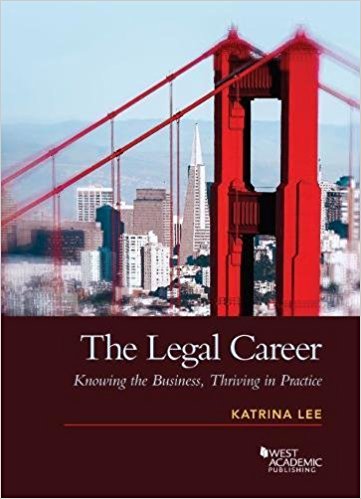In-house lawyer @J_Dot_J has described it most directly:
Client: You probably have the coolest job.
Yes. I stay awake at night, crippled with anxiety and my mind racing, so you don’t have to.
— JJ Lang Syne (@J_Dot_J) November 4, 2017
A law student once shared a related concept to describe his coping mechanism, especially during finals:
“Some people are stress emitters. Some are stress receivers. I’ve learned I’m a stress receiver, and I have to stay away from the emitters.”
The common theme is anxiety. It comes from somewhere, and it goes somewhere. Is there any pattern to the movement of anxiety, and any way to manage it?
One possible answer to this question is “Bowen theory,” which is a theory of family systems that has been extended to the workplace as well. “Are organizations emotional systems also? It appears to be the case. Theoretically, all that is necessary to create an emotional system is spending time together.” This quote is from Roberta Gilbert’s The Eight Concepts of Bowen Theory, which provides the basis for the following summary:
According to Bowen theory, the family—or workplace—unit is the key unit of analysis, rather than the individual. This unit is really a system of interconnected people, and it has two characteristics:
- Whatever affects one affects each one in the system. That is, anxiety moves easily from person to person in the group.
- [System] members trade “self” into the family relationship in a “fusion” of selves.

You may stop here and say that your team at work does not have these characteristics. If you’re correct, then you don’t have a true workplace unit and Bowen theory isn’t going to be helpful.
But it may be worth asking in a different way: Does anxiety move within your workplace? According to Gilbert, “where the anxiety travels defines the limits of the emotional system.” And does your workplace stake a claim on the workers in the system to “donate” some portion of their selves for work? Does the workplace send a message to “be like us” or “think as we think”? According to Gilbert, an emotional system is made up of these donations of self so that the donates parts become available “more for the family than for then individual.” In this way, members of a unit lose self into the larger unit. More togetherness means more loss of self, and quicker transmission of anxiety.
(When reading about this loss of self and its connection to “groupthink,” I was immediately reminded of compliance challenges and the work of my friend, compliance attorney Scott Killingsworth, on how organizational culture is transmitted and replicated.)
Individuals in a system are healthier and more resilient to the anxiety passed around in the group if they retain some core “differentiated self.” The concept of the self has two components: a “pseudo self” which is the part that is tossed about by the anxiety of the group and conforms to the needs of the group, and the “basic [or solid] self” which is the part that fights for individuality and stands up for beliefs and convictions. The solid self is the differentiated self. The more the pseudo-self dominates the solid self, the more anxiety that member will feel and will contribute to the system.
Here, if you’re congratulating yourself on being an amazing differentiated person who feels absolutely no influence from your workplace, you may want to double-check yourself for some sort of emotional Dunning-Kruger effect. Gilbert states that if you looked at differentiated selves on a scale of 0 to 100, most of the population hovers around about a 30 and 50+ would be extremely unusual. But this is just an estimate; Gilbert notes that it’s impossible to measure differentiation in one segment of time. The conditions of any given moment are too arbitrary, and you can raise the functioning level of an undifferentiated person by giving them a compliment, and you can lower their functioning by criticizing them.
Within any unit, members of that unit deal with anxiety in four automatic and familiar patterns:
- Making a triangle among three people, where one is the “problem” (such as a child, or a recalcitrant employee, or an attorney viewed as a roadblock)
- Creating conflict by refusing to give in on major issues, expending significant energy
- Seeking distance by slowing down or stopping communication, while still remaining emotionally defined by the problem
- Overfunctioning / underfunctioning, in which one partner becomes more dominant and the other more passive.
These methods of dealing with anxiety are not a problem unless they become habitual and repetitive “where no one knows how to get out of it.”
There aren’t many references to Bowen theory in traditional legal literature. After reading enough to write this overview, I think it deserves more study, particularly as the legal industry becomes more focused on systems and processes. The law deals with unpredictable, complex problems; designing a system for helping clients with their problems will be much easier if the system of legal professionals is internally efficient and not clogged with stress and disrupted by attrition.
In future posts, I will explore some more ideas from Bowen theory and how they may apply in legal teams. Please comment if this overview prompted thoughts or questions.
 Katrina Lee’s new book on the business of law,
Katrina Lee’s new book on the business of law,